Lets see how to do Office 365 Hybrid Configuration Wizard Step by Step with Test Data Migration and see how to Manage Endpoints. Quick Office 365 Hybrid Migration guide step by step.
Making sure Exchange Server Running Latest CUs in my Case they are running Exchange Servers running latest Cumulative Updates to have stable hybrid.
Make sure MRS Proxy Endpoint is Enabled on Internet Facing Client Access Server. If its load balanced. you need to enabled it on all CAS servers
Use IE – Internet Explorer
Login to Exchange Control Panel – On Premises
Hybrid – Enable
412 Cookies are Disabled
Make sure ECP , Office 365 Urls are added to Trusted Sites.
Download And Run the Hybrid Setup
Choose Next
Choose the Optimal Exchange Server
Or Specify the Exchange Client Access Server Manually. (Internet Facing Client Access Server)
uncheck – Use windows Credentials and enter it manually.
Enter On-Premises Credentials
Enter Office365 admin Creds.
Checks Local and Remote Connectivity.
Choose Full Hybrid Configuration.
Choose Configure my Client Access and mailbox servers for Secure Mail Transport (Typical)
Securing Email flow Using TLS transport layer certificates with On-Prem And Office 365 Servers.
Choose Servers to coexist mail between Office 365 and On-premises.
in my case . Both
Certificate Used are not there in all servers.
In my case . Both sites are in different countries. using different SSL Certs.
Exchange the certs between them by exporting as .pfx and import them(you can use Exchange Control Panel to export/import certs). Clicked Search Again. Chosen the certificate
Choose the Certificate for TLS (Transport Layer Security).
Enter the FQDN which has port 25 opened.
Its done.
Make sure 443 is opened and its the internet facing Client Access server.
Error :
2016.11.16 08:59:47.842 WARNING [Functionality=RunWorkflow]
HCW8078 Migration Endpoint could not be created.
Microsoft.Exchange.Migration.MigrationServerConnectionFailedException
The connection to the server ‘outlook.careexchange.in could not be completed.
Microsoft.Exchange.MailboxReplicationService.RemoteTransientException
The call to ‘https://outlook.careexchange.in/EWS/mrsproxy.svc’ failed. Error details: Access is denied..
Microsoft.Exchange.MailboxReplicationService.RemotePermanentException
Access is denied.
Solution – Once MRS Proxy is accessible
- Firewall Ports 443
- MRS proxy not enabled in Web services Virtual Directory.
Endpoints can be created manually using the office 365 console.
—
Now lets see how to Create a Endpoint and do a test migration
Office 365 Admin Console – Data Migration – Exchange
Choose Settings to Get your First Migration Endpoint Created.
Once Migration end point is Created
Choose Mailboxes – Assign License to mailbox and Start Migration
Once test mailbox is created.
Sample End Point Default Settings
Choose Migration to see status.
Choose Migration Endpoints to Manage Endpoints
Manage Migration Endpoints –
Co-existence Connectors can be Customized here below .
See also –

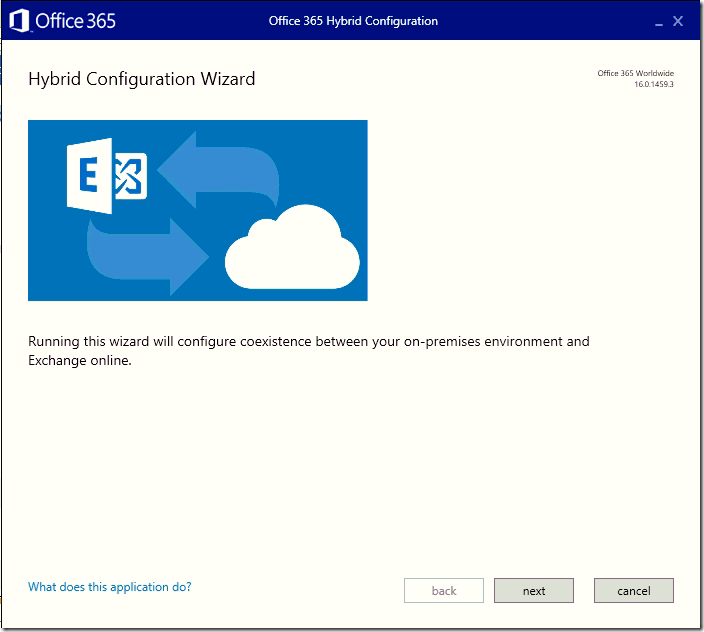

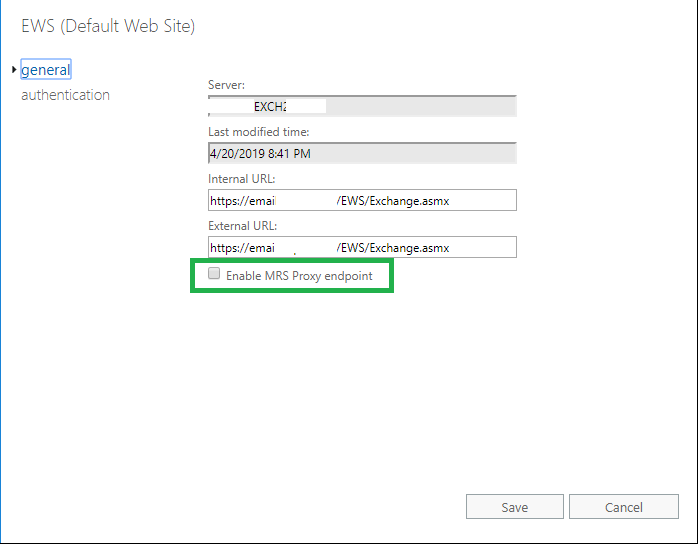















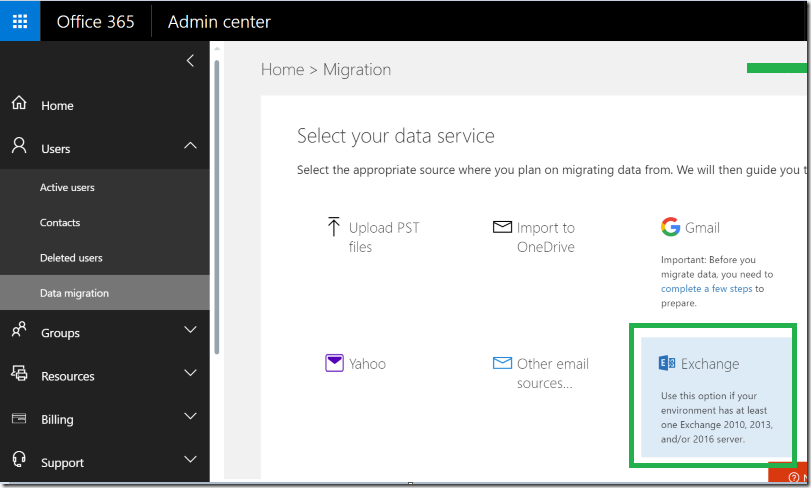
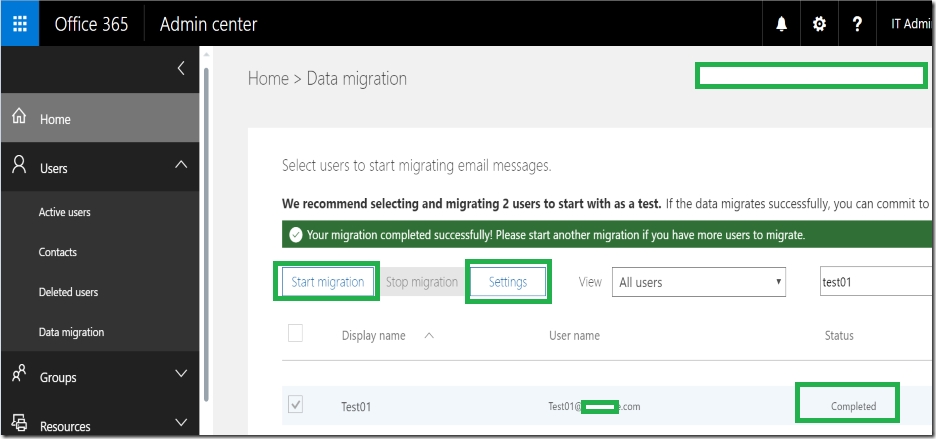
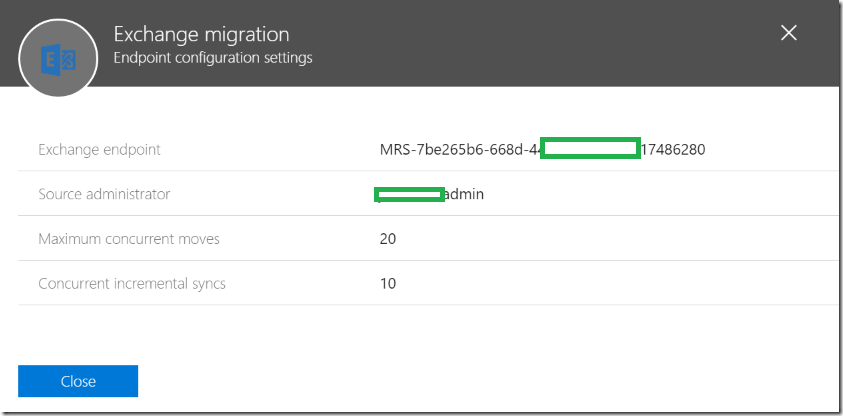
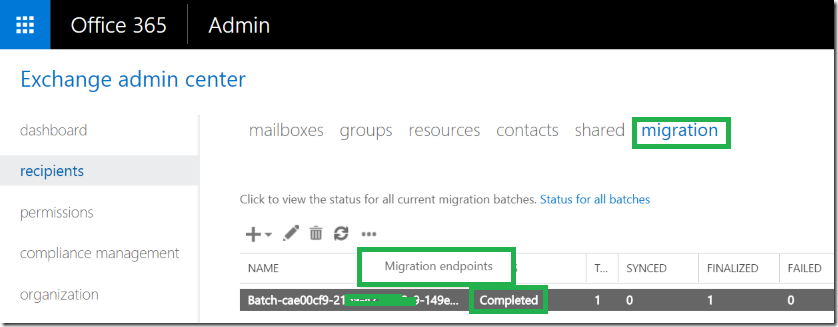
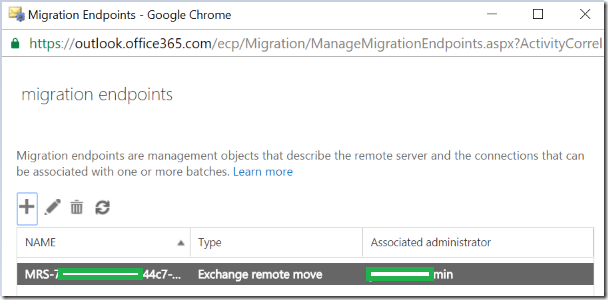
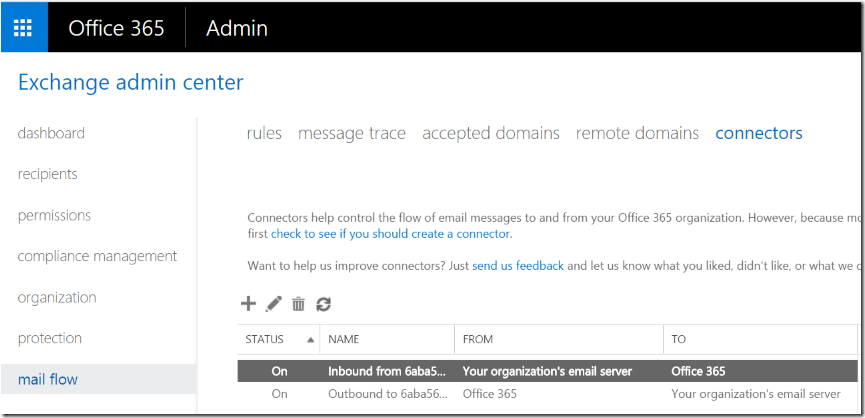

thank you so much , i’ve created the hybrid connection ising HCW scuccessfully , and i’ve made a mifration for some mailboxes from on-premise to exchange online , unfotunately i can not sent from a mailbox on-prmise to a mailbox in exchange online , in ToolBox it sys STARTTLS is required although there is a certificate and the HCW alreaday reads it
You can remove TLS and use Public IPs for Migration , if its going to be a short migration.
Hi,
I’m planning to setup hybrid Office 365 with my exchange 2010 environment.
fyi>EOP had already configured a few years ago with Office 365. so currently all incoming and outbound emails go thru Office 365.
I was wondering whether I still require to do the Receiver and Sender Connector Configuration steps as part of the Wizard. do I skip this? as it’s already configured.
Please advise.
I’m planning to setup hybrid Office 365 with my exchange 2010 environment.
fyi>EOP had already configured a few years ago with Office 365. so currently all incoming and outbound emails go thru Office 365.
I was wondering whether I still require to do the Receiver and Sender Connector Configuration steps as part of the Wizard. do I skip this? as it’s already configured.
Please advise. ?
You can skip it. or remove those connectors. as all mail flow is via office 365 to send and receive
Hi,
Nice article for the migration, few queries with you :
1. Respective to dns records (internal and external) what are the changes we have to do?
2. how the autodiscover will work for the on-premise users and exo users, any config changes have to perform?
3. EWS and IIS any changes on config?
1. Respective to dns records (internal and external) what are the changes we have to do?
No change required initially to start the co-existence
2. how the autodiscover will work for the on-premise users and exo users, any config changes have to perform?
Autodiscover will keep hitting on-premises and redirect to the cloud
until you move all
3. EWS and IIS any changes on config?
No changes made in EWS and iis
Hi,
If using two FQDNs – mail.exchange.xxx for web services/443 and smtp.exchange.xxx for SMTP/25, do you recommend using smtp.exchange.xxx as the Org FQDN while configuring HCW (classic full hybrid). Will the HCW be able to create a migration endpoint if so (using mail.exchange.xxx) or will there be a manual intervention required?
Thanks in advance!
No . Hybrid Configures 443 / While configuring mail flow you use the SMTP FQDN
Hi,
Thanks for the article. Configured Hybrid Wizard, however, users on the cloud cannot send to on-prem and vice-versa. But can sent to external cloud users.
Will selecting enable centralized mail transport resolve this issue?
Regards